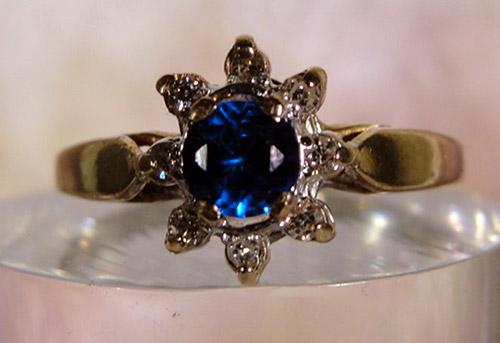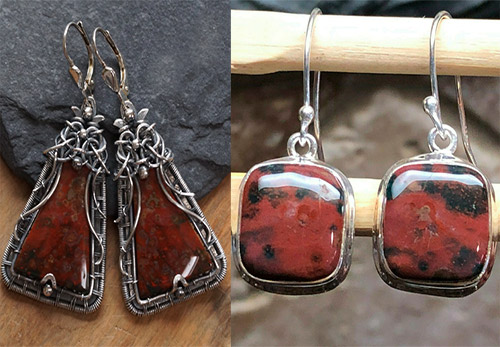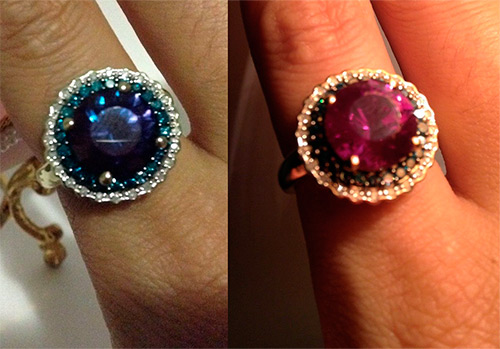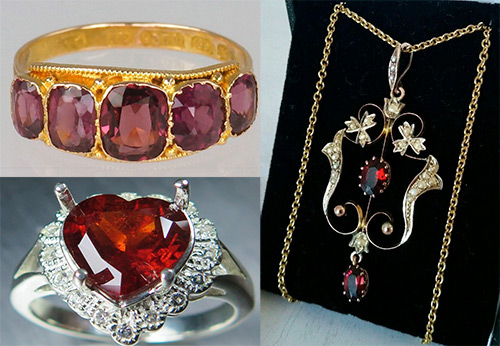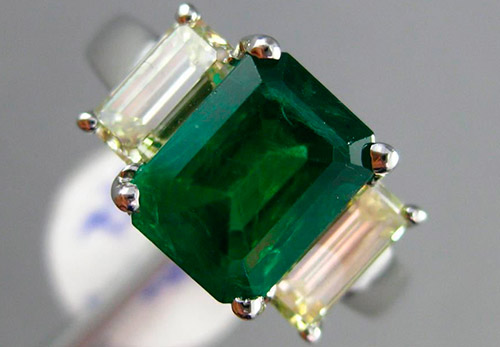DECORATIONS
Beautiful sultanite stone - jewelry and medicinal properties
Sultanite is a rare and extraordinarily beautiful gemstone. It was first found in the Urals, then it became known as the diaspora. After finds in Turkey, the stone was named sultanite.
Its main feature is the ability to transform under different lighting conditions, the stone changes its color like alexandrite, therefore it is called a chameleon stone. Whatever it is called, the stone is magnificent, and the name Sultanite is well-deserved. All eastern rulers loved rings with this stone, gave them to their wives and concubines, and decorated clothes.
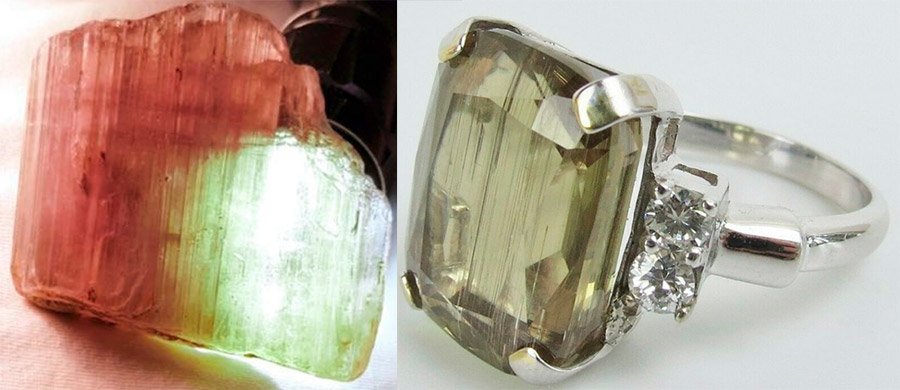
Sultanite deposits
As already mentioned, the sultanite deposits are located in the Middle and South Urals. In Russia, it is found in Sakha-Yakutia. But here it is fragile and small, so it is of little interest to jewelers. In other parts of the planet, sultanite is found in Azerbaijan, Uzbekistan, China, and the United States. But stones in Turkey have the best gem quality.
It was Turkish stones that became famous as rare and precious. In addition, sultanites are found in some other European countries. But for jewelers, only Turkish stones are of the greatest interest.
The beauty and magic of jewelry with this stone is best seen in reality. Photos cannot convey even a small part. The video can only give a rough idea.
Sultanite stone properties
According to its chemical composition, gemologists consider sultanite as corundum with a water content. The stone has a varied range of shades. In low light, especially on a cloudy day, its color is close to the color of young spring grass; in brighter light, brown and yellow shades, including amber, appear in it.
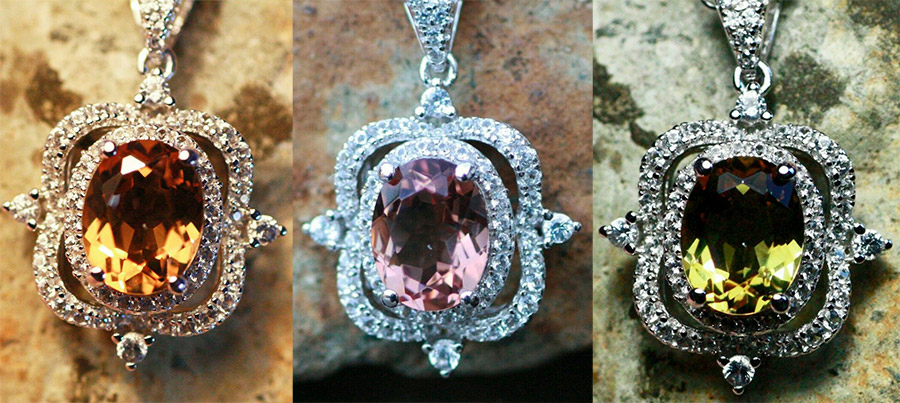
The color of the stone also depends on impurities, and therefore it can be not only yellow or green, but also crimson, pink, yellow-brown and even purple. For example, iron gives yellow, brown and brown hues, manganese oxide paints the stone pink and red, and chromium gives the mineral bright green tones.
The stone is fragile, when heated, it cracks and disintegrates into grains, so it should not be left even in direct sunlight.
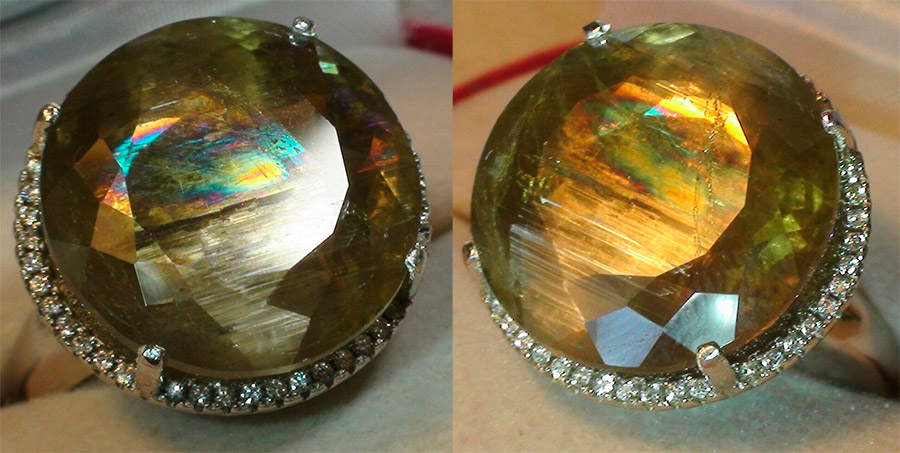
This mineral is also called diaspora and thanatarite. Diaspora is translated from Greek as "dispersion". This name was introduced by the Frenchman R.J. Hauy (Rene Just Hauy) in 1801. The stone was named thanatarite in Russia, in memory of the Russian geologist Joseph Isaakovich Tanatar (1880 - 1961).
The hardness on the Mohs scale is 6.5-7. Density - 3.2-3.5 g / cm³.
Glassy or pearlescent luster.
Glassy or pearlescent luster.
Sultanite in jewelry
Framed in gold or silver, the sultanite shimmers and sparkles. In the hands of a jeweler, it turns into a jewel, cutting by a high-class master will emphasize the beauty of the stone. The rarity, beauty of the sultanite and the peculiarities of its processing contribute to the high cost. For a stone to sparkle and play with tints of colors, a high skill of a jeweler is required.
When cut, the stone loses its mass, about 95 - 97% of the original weight. Therefore, the masterpieces of jewelry work are sometimes valued on a par with diamonds... If you wear jewelry with this stone, keep in mind what kind of lighting you will be in so that the color of the stone matches your outfit. The stone goes well with diamonds and pearls.
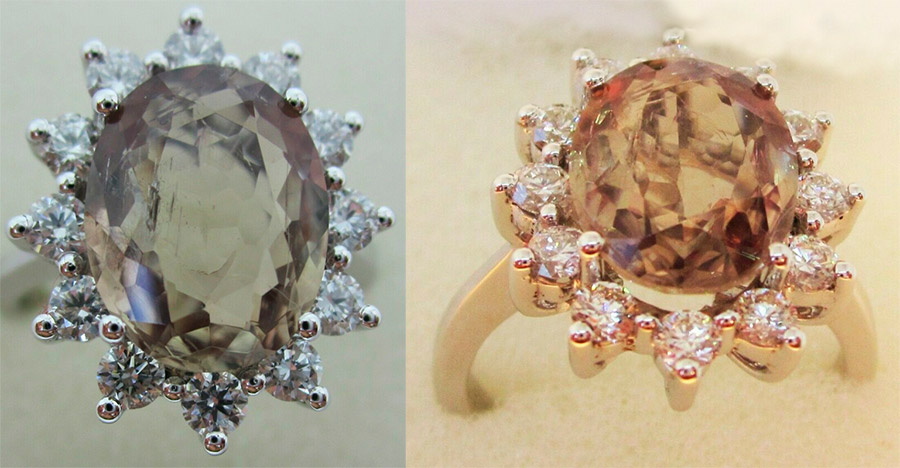
Sultanite deserves the best frame. It pairs well with silver in any light. In ancient times, jewelers used the sultanite to determine the quality of gold, as a stone in a high quality gold setting plays and sparkles.
Due to its increased fragility, it requires delicate handling.The stone should be rinsed in water at room temperature, wiped off with a soft cloth, stored separately from other jewelry in a soft cloth bag. Jewelry with a sultanite must be removed at a time when heating or performing some household work is possible so that particles of fat, dirt, sweat do not fall on it, perfumery and cosmeticsas well as aggressive detergents. And, of course, protect from shocks and falls.
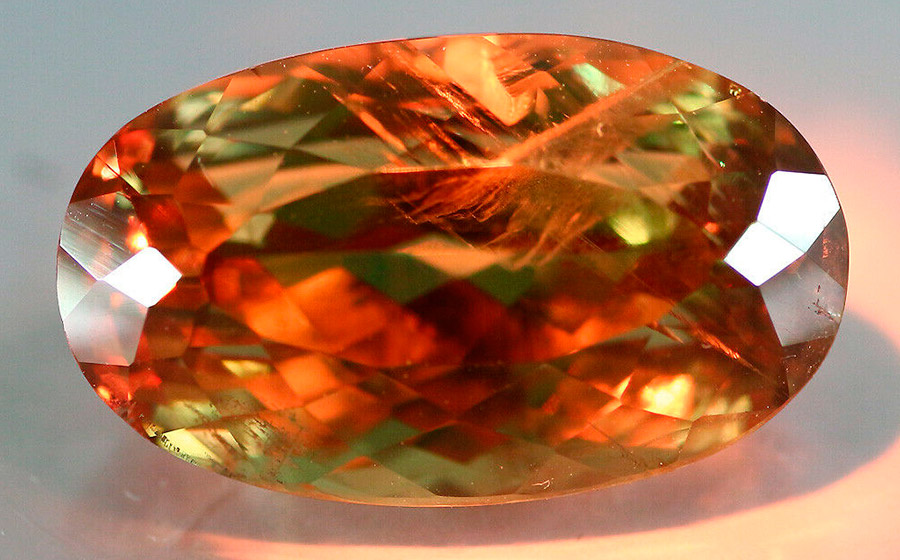
How to distinguish a real stone from a fake
Sultanite is a rare and valuable stone, and not everyone can afford it. Therefore, scientists have learned to synthesize it, the best examples of artificial stones are stones from Turkey. This sultanite is called hydrothermal, and its properties are in no way inferior to natural, but at the same time it is much easier to process.
Which one is which one can be distinguished by the price and the inscription on the label - g / t. But such information and price will be available only in jewelry stores with a high level of customer confidence, and the stone must have a certificate.
Mostly, jewelry with artificial sultanite is sold, and the prices for them are acceptable for many buyers. Fakes are common, but an artificial stone is an analogue of a natural mineral, and has nothing to do with fakes, it is impossible to distinguish it from a natural mineral without the help of a gemologist. Glass and plastic samples can be fakes, so do not rush to purchase "stones called sultanite" from random "well-wishers".
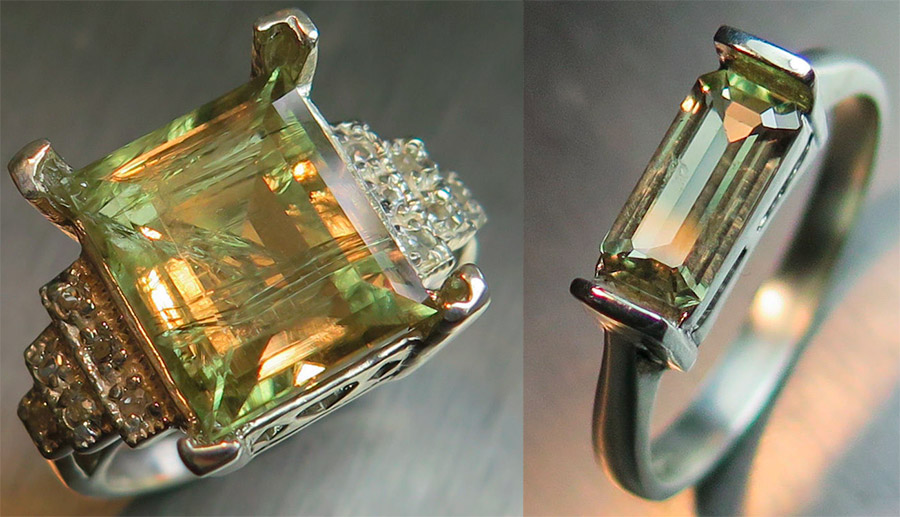
The magical and healing properties of the sultanite
It has long been claimed that this stone is suitable for creative people. Poets, musicians, painters and artists will certainly receive help and inspiration from him. At the same time, they assure that the stone can tune into the philosophical reflections of any person, strengthen the imagination, help to become persistent, relieve bad mood and ailments.
Sultanite is loved by soothsayers; by the appearance of the stone, they tell about the future. The stone, as lithotherapists are convinced, can help get rid of headaches, cure colds and bring out of a depressive state. The soothsayers claim that the sultanite splits, warning a person of impending misfortunes. Really, what's the point? If I could have prevented trouble ?!
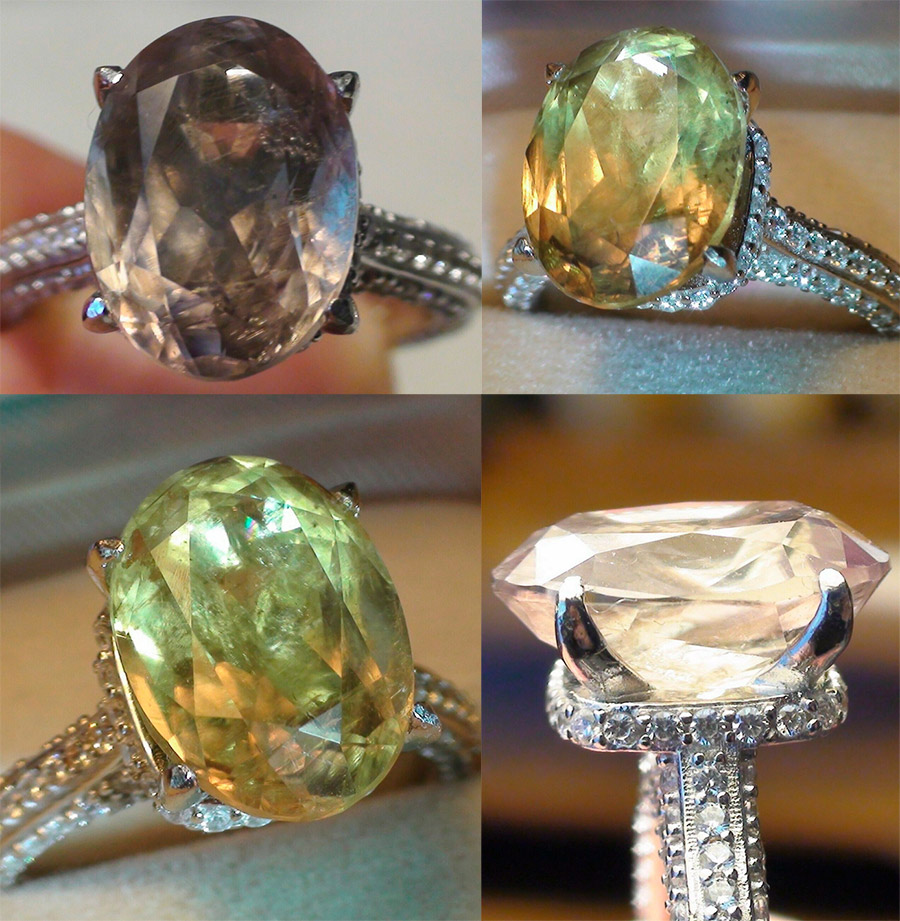
Sultanite suits people who were born, one might say, under any sign of the zodiac, it just helps some in one, others - in another. He gives confidence, poise and calmness to many, protects from negative influences, and helps to correct their negative inclinations.
The stone influences the sphere of feelings, helps to become more cheerful and wise. Each stone has its own abilities. I wish they were really true. But we must not forget that a lot depends on us.
Thanks to the fact that they learned to synthesize this beautiful stone, many of us can enjoy the beauty of the stone that nature has endowed it with.
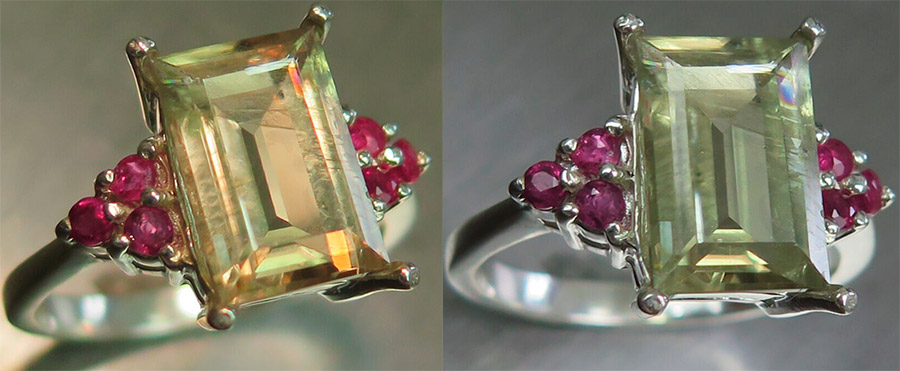
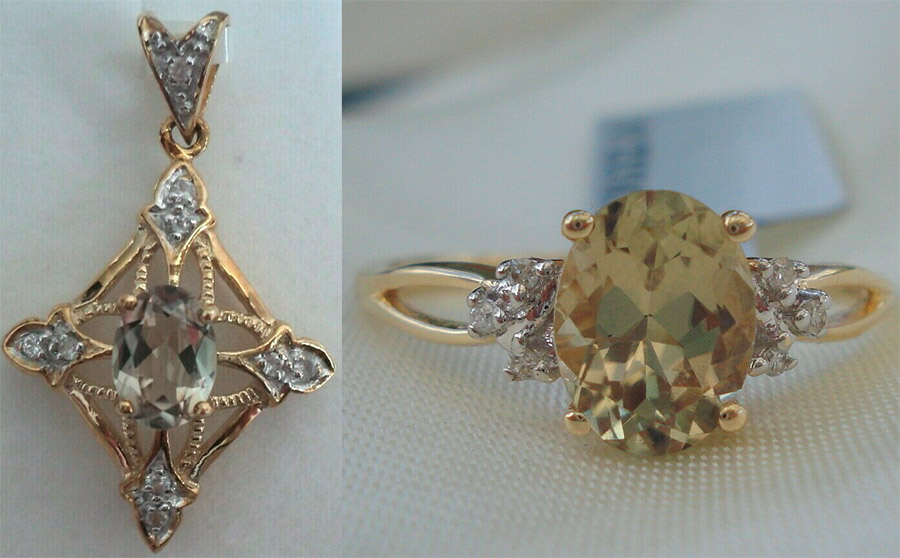
Comments and Reviews
Add a comment
Rating news
Shades of clothing that make women look younger
What shades of hair make women younger: rules and photos
Funny wedding dresses - photos and ideas
12 most expensive down jackets for the winter
How to look 25 at 40: tips from supermodels
Beautiful schoolgirls
Anti-aging haircuts and hairstyles for women
Fashionable skirts for autumn and winter
Fashionable women's trousers for the cold season
Fashionable and stylish sandals for summer 2024
Spring-summer 2024
 Fashionable dresses and tops with thin spaghetti straps
Fashionable dresses and tops with thin spaghetti straps
 Bandana tops: how to wear stylishly and beautifully
Bandana tops: how to wear stylishly and beautifully
 How to put together the perfect men's wardrobe for the summer
How to put together the perfect men's wardrobe for the summer
 Fashionable shorts for spring-summer 2024
Fashionable shorts for spring-summer 2024
 Fashionable skirts for spring-summer 2024: a guide to online shopping
Fashionable skirts for spring-summer 2024: a guide to online shopping
 The most fashionable dresses spring-summer 2024: styles and colors
The most fashionable dresses spring-summer 2024: styles and colors
 Fashionable total look 2024: image ideas and trends
Fashionable total look 2024: image ideas and trends
